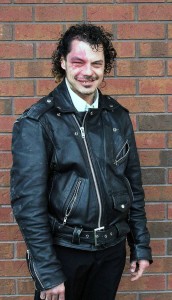Epilepsy becoming more well known

By Samantha Wigfield
By Samantha Wigfield
According to the Epilepsy Support Center, epilepsy is not going unnoticed as more people are becoming increasingly informed about the neurological brain disorder
The Epilepsy Support Center, which can be found across London/Middlesex, Sarnia/Lambton, Chatham/Kent, Windsor/Essex, Oxford and Elgin counties provides support and information to those with epilepsy.
Christine Caniff, an employee of the center, said there are regular monthly support meetings. Her job is to support, listen and educate those with epilepsy along with employers, family members and teachers. The group is funded by the United Way and all the proceeds held in fundraisers from Epilepsy month in March go to the group to provide services.
“One out of 10 people will have a seizure in their lifetime, but it’s not epilepsy unless they have two or more,” Caniff said.
A seizure will temporarily interfere with movement, speech, muscle control, vision and awareness.
David Marton, 40, said he has Sturge – Weber syndrome, a mild type of epilepsy.
Marton has a birthmark, called a Port-Wine Stain on the right side of his face. The birthmark is caused by enlarged vessels in his brain on and indicates what side of his body seizures happen. This means that Marton’s seizures happen on the right side of his brain and his left side of the body is affected.
One out of 100 people have epilepsy, so roughly 70 million people round the world are affected. The most common forms of seizures are Absence (also known as Petite Mal) and Tonic Clonic (known as Grand Mal)
Jessica Quaggiotto, 21, a close friend of Marton, she said she has never seen someone have a seizure, but was told to let it happen and not to panic.
“I worry because he had a seizure at work and he called me right after and kept working like nothing happened,” Quaggiotto said.
Epilepsy is the fourth most common neurological disorder in the world and 42 people in Canada are diagnosed every day. Fourty four per cent of children are diagnosed before the age of five and 50 per cent of children who have epilepsy are free of seizures in adulthood.
Marton said he is restricted from doing certain things, such as sports and specific jobs.
“I wanted to be a chef, but I can’t because if I’m holding a hot pot I can go into a seizure. It’s a health and safety rule. I could harm myself, or others,” Marton said.
There has been a breakthrough in predicting seizures. Two University of Windsor researchers developed a software that predicts a seizure 17 minutes before it happens.
SIDEBAR.
If someone has a seizure, move potentially harmful things out of the way. Loosen tight clothing around the neck, put a pillow or something soft underneath their head and put them to one side (to prevent them choking on their own saliva). Time the seizure. Do not hold them down or put your fingers in their mouth as they could bite down hard on them. Call an ambulance if they go into a second seizure immediately, or if it lasts longer than five minutes.
Other contact info – Christine Caniff



